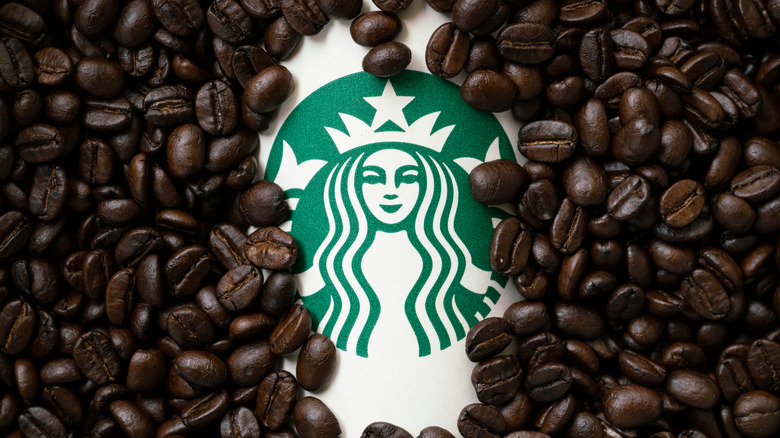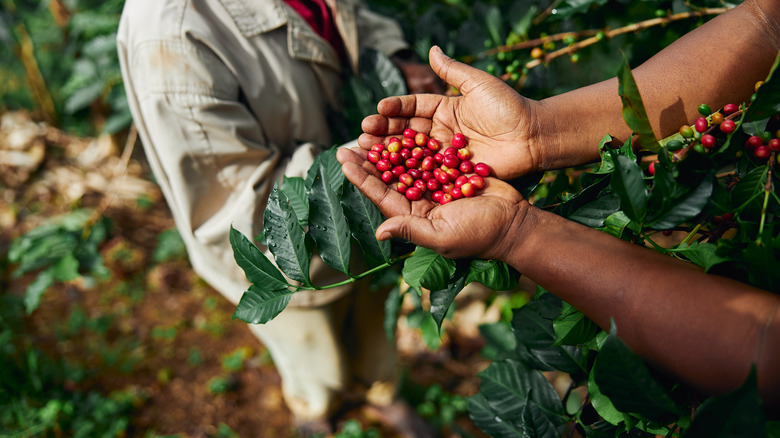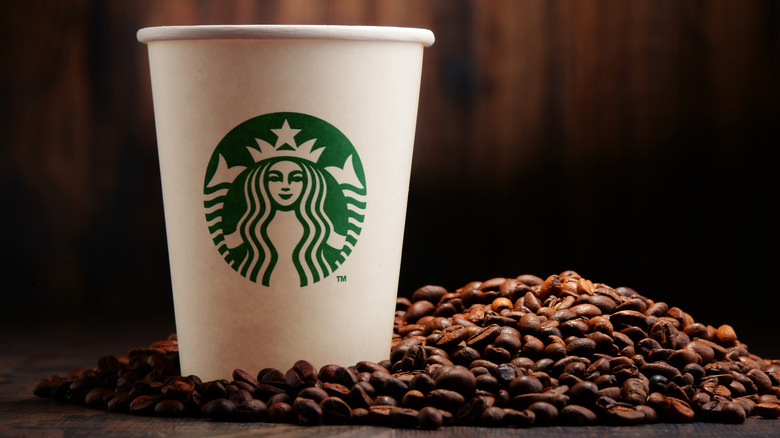Here's Where The Majority Of Starbucks Coffee Is Sourced From
In 2021, Starbucks shared that the company purchases approximately 800 million pounds of coffee annually. This gargantuan volume might make you wonder where Starbucks gets the coffee that goes into its hot and cold signature drinks, such as cold brew and lattes. The answer to that lies not in one place, but in around 400,000 farms around the globe — but the company largely does its business in a tropical region known as the Coffee Belt.
Between the Tropics of Cancer and Capricorn around the equator, the Coffee Belt loops around the entire planet, hitting countries in regions of Latin America, Africa, and Asia. These areas provide excellent growing conditions for finicky coffee plants, which require temperate or tropical climates with no frost, plenty of water, and indirect yet plentiful sunlight. Latin America encompasses the bulk of Starbucks' partnerships, with the company stating that farms in that region provide the most consistent quality in their beans. African- and Asian-sourced coffee makes up a smaller (but still significant) percentage of the company's global purchases.
Coffee's flavor depends on where it's grown
Altitude, climate, and soil composition are just a few environmental factors that impact the profile of coffee beans. This is part of the reason why Starbucks harvests coffee from various countries, as no two farms can deliver the exact same taste. Agricultural and brewing customs also vary wildly within these regions. Costa Rican farmers, for example, opt to grow their coffee fruits (known as coffee cherries) in fincas, or tiny plots of land. Brazilian farmers, on the other hand, manage large plantations in order to produce low-acid coffee beans in huge quantities.
Starbucks says that, generally speaking, Latin American coffee is known for its bright taste, which is accompanied by undertones of various spices. African coffees are usually fruity and full of acidic undertones that recall citrus fruits and berries. Asian coffee, on the other hand, is typically earthy and the smoothest in texture when brewed. Keep all of these traits in mind the next time you order drip coffee from Starbucks.
Starbucks tries to use ethically-sourced coffee
Labor violations are not a rarity in the world of coffee manufacturing, and Starbucks is aware of that. In 2004, the company launched its Coffee and Farmer Equity (C.A.F.E.) practices, which attempt to regulate the rights of workers at coffee farms in business with the company. With the help of third-party organizations, Starbucks inspects these suppliers routinely to not only ensure the quality of the final product, but also that workplace exploitation does not happen at these sites. No children are allowed to work at Starbucks-partnered farms, and even temporary and seasonal workers must receive minimum wage payment that complies with local law.
However, even with all these safety checks in place, Starbucks has seen its fair share of controversy over labor violations. In 2020, The Guardian reported that the company regularly did business with five Guatemalan farms that frequently employed children under 13. Starbucks released a public statement emphasizing its commitment to verify that its partners are committed to C.A.F.E. guidelines.



